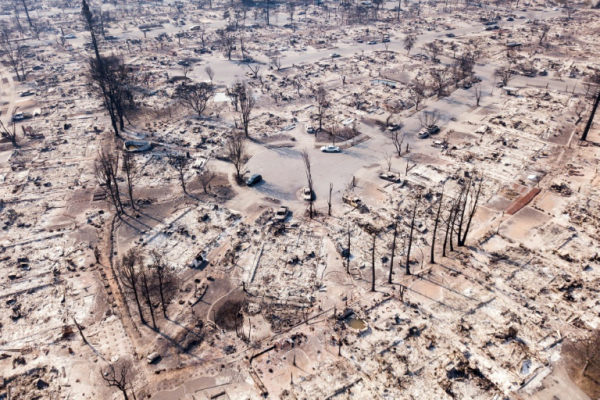
Scientists warn that California will experience more extreme weather events, including droughts and floods, if global fossil fuel consumption continues unaltered © Elijah Nouvelage – AFP/File
California will zigzag between droughts and floods which will become more intense and more frequent in the coming decades unless global emissions of planet-warming greenhouse gases are checked, researchers said Monday.
The Golden State has already experienced a rapid rise in such “whiplash” events — careering from a record multi-year drought between 2012 and 2016, to heavy flooding in the winter of 2016-17.
The situation will worsen as the global climate alters due to mankind’s voracious burning of coal, oil, and gas for energy, a team wrote in the journal Nature Climate Change.
They projected that wet-to-dry extremes in California may double under a worst-case scenario in which fossil fuel emissions continue growing until 2100 instead of the urgent reduction scientists say our planet needs.
Such unfettered emissions would lead to average global warming far exceeding the ceiling of two degrees Celsius (3.6 degrees Fahrenheit) set out in the Paris Agreement concluded by the world’s nations in 2015.
A recent analysis said national pledges made under the pact slow emissions, but still put the world on track for warming of 3C or more — dangerous, but lower than the outlier scenario used for the study.
Based on their models, the researchers projected a 25-percent rise in the frequency of so-called whiplash events for northern California this century, and up to 100 percent in the south of the state.
A disaster on the scale of the 1862 “Great Flood” was likely to occur at least once between now and 2060 and would “probably lead to considerable loss of life and economic damages approaching a trillion dollars,” said the study.
Multiple such events were “plausible” until 2100.
Serious challenge
California, like other regions with a Mediterranean climate, enjoys dry summers and wet winters and is prone to dramatic swings between drought and flood.
In 2017, after a years-long dry period, the state endured months of heavy rain that damaged hundreds of roads and contributed to the failure of the Oroville Dam that forced the emergency evacuation of nearly a quarter-of-a-million people.
A whiplash future as projected in the study would “seriously challenge” California’s water storage, conveyance, and flood control infrastructure, the authors said.
“Few of the dams, levees and canals that currently protect millions living in California’s flood plains and facilitate the movement of water from Sierra Nevada watersheds to coastal cities have been tested by a deluge as severe” as the Great Flood, they wrote.
Another paper, published in the same journal, warned that average global warming of 3 C over pre-industrial levels will double the total drought-prone area of Europe from 13 percent to 26 percent.
If warming can be contained to 1.5 degree Celsius, the lower aspirational target outlined in the Paris Agreement, this is reduced to 19 percent, it said.
There was bad news for Africa too.
In a third publication, also in Nature Climate Change, researchers said limiting warming to 1.5 C rather than 2 C promised “considerable benefits in terms of minimising heat extremes and their associated socio-economic impacts across Africa.”
But it won’t remove the risk altogether. MKH
RELATED STORIES:
California has worst US air pollution
World’s carbon emissions on the rise again